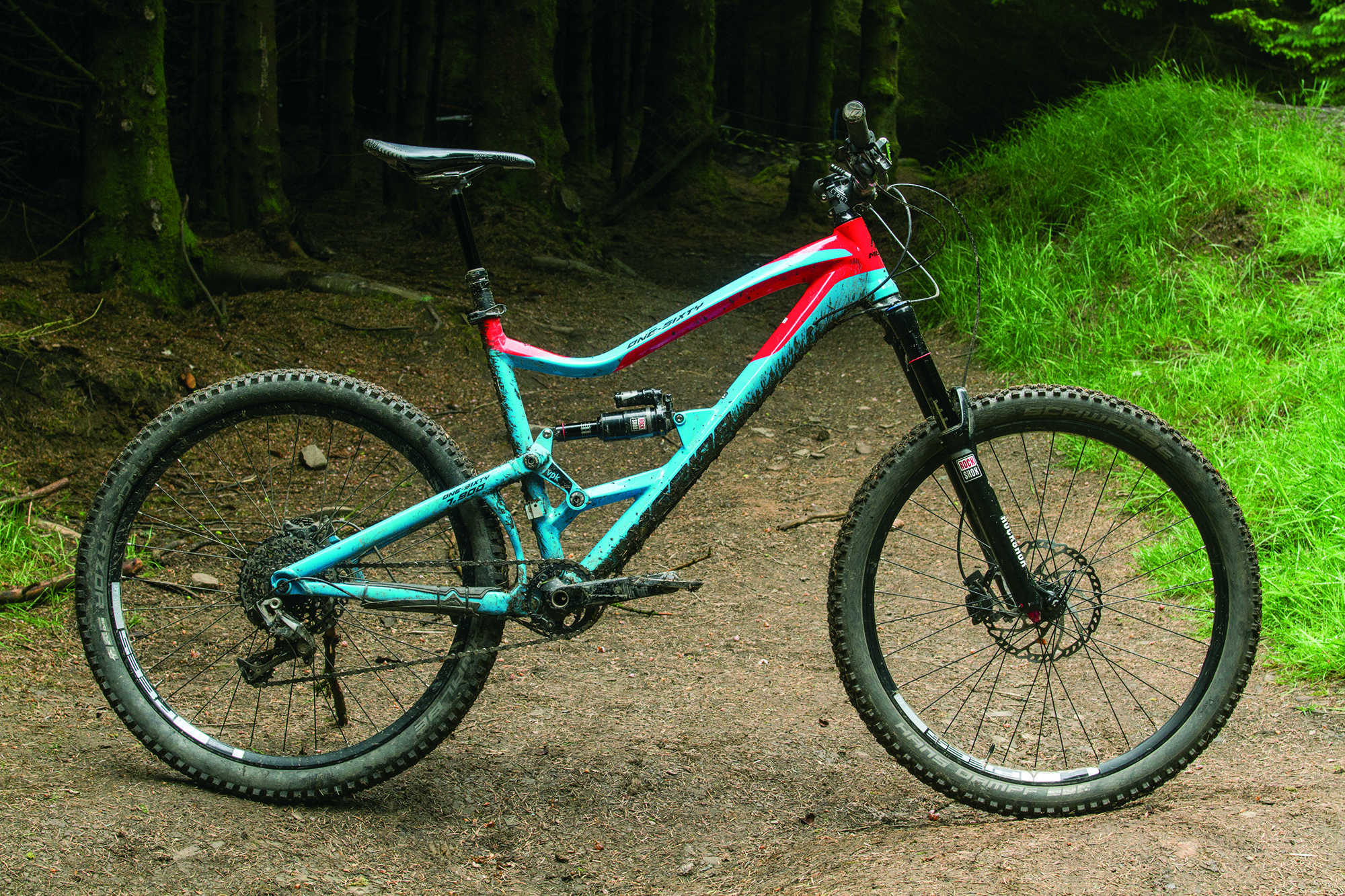First published in Singletrack Magazine issue 99

Merida is one of the largest manufacturers of bikes on the planet – not that we in the UK would probably realise it. It’s actually only second in Taiwan behind Giant – and as you may know, Taiwan isn’t exactly short on bike manufacturers. Alongside lending its expertise to making a great many frames for other manufacturers, Merida has also been releasing its own bikes for over 20 years in pretty much every niche you can think of.
The somewhat cumbersomely-named Merida One-Sixty 7. 900 is the brand’s 160mm ‘enduro’ bike, for want of a better niche. So that’s the One-Sixty bit of their name taken care of. The ‘7’ refers to the 27.5 wheelsize (I guess), and I suspect the ‘900’ refers to the trim level.

The frame is a shaped and hydroformed aluminium multi-linked job. The lower pivot extends from just above the bottom bracket, and coupled with the long upper pivot, it yields a rearward axle path.
The ‘900’ comes pretty nicely kitted out. There’s a 1×11 SRAM X01 groupset with an FSA Afterburner crank, some XT stoppers with very welcome 203mm front and 180mm rear rotors, and a RockShox Reverb seatpost. Those 27.5in wheels are sprung by a RockShox RCT3 Dual Position Pike with 160mm of travel at the front, and a RockShox Monarch RC3 Plus (DebonAir) at the back. Schwalbe’s Hans Dampf and Rock Razor front and rear tyres respectively keep everything above the trail.

Geometry is pretty spot on. Our Large frame sported a 633mm (24.9mm) top tube, a 66° head angle and 74°seat angle. Chainstays are listed at 440mm (17.3in). The numbers certainly tick all of the right boxes. It’s longish – not exactly Mondraker long, but it’s certainly going in that direction. The international Merida website lists the sizes from S all the way up to XL, although we can only get M and L here in the UK. Blame that on market forces; we’re told that there simply isn’t the demand for the largest and smallest sizes in the UK, sadly.

Trail notes.
The meat and potatoes of a bike like this, to me, is in the descending. And true to form, descending is a huge pile of fun. There’s a lovely bottomless feel to the travel when you’re travelling at speed over steep things; I repeatedly kept on checking the amount of travel I was getting at the back, thinking that I never hit the limit stop, only to find that I was getting all the travel and I didn’t notice. This is a good thing. It’s a bike which feels stable and confident in corners, and traction never seemed to be an enormous issue, although with the somewhat – uh – drier climes-orientated Rock Razor on the rear, and the Hans Dampf on the front, if it’s particularly gloopy you’d be advised to seek out some alternative rubber. But if the weather is dry (ish), the pairing serves.
Any issues with the suspension become noticeable if you stand on the pedals and accelerate away from a section, though. That rearward axle path generates quite a lot of chain growth, and consequently a certain amount of pedal feedback – but this doesn’t seem to be too much of a problem, at least on the descents. But it can become an issue on the climbs.
If you just sit and spin up the climbs, it’s not too much of a problem – in fact it wasn’t noticeable to me. But if you stand up and muscle up anything – a particularly steep or technical section, for example – it becomes very obvious. It’s somewhat disconcerting, but it didn’t seem to slow me down overly; essentially exerting pressure on the pedals is trying to pull the rear axle towards the bottom bracket. Flicking on the shock’s lockout helps, as you’d expect – but I prefer avoiding full lockouts if I can – I like my suspension to actually work. A shock with more tuneable compression damping might be a way of ameliorating the problem. Sadly we didn’t get a chance to see if this might work.
For all this, though, the feedback only seemed really problematic for me during standing up climbing. I didn’t notice it on long, steep descents, and only slightly on pedally ones. It didn’t seem to affect – or be noticeable on – landings or high-speed runs through technical sections. And as with many suspension feedback issues, quite a lot depended on the gear I was in too; lower gears seemed to be more profoundly affected than higher ones.
Apart from this I had few issues. The brakes, drivetrain and components performed excellently. The supplied FSA chainring was prone to occasional chain-dropping, but a replacement (swiftly supplied by Merida) has had no further problem. The suspension feedback issue which manifests largely on high-output climbs is the only fly in the ointment. That aside, the Merida One-Sixty is a great bike, and impressive value.
- Frame // One-Sixty Aluminium
- Shock // RockShox Monarch RC3 Plus
- Fork // RockShox Pike RCT3 27 15 2P 160mm taper
- Hubs // DT Swiss 370 15 disc/DT Swiss 370-11s disc
- Rims // DT Swiss 533D-27
- Tyres // Schwalbe Hans Dampf 27 2.35in TSC/Schwalbe Rock Razor 27 2.35in PSC
- Chainset // FSA Afterburner 30T 11-speed
- Front mech// n/a
- Rear mech // SRAM X01 11-speed
- Shifters // SL Trigger X0 11-speed RR
- Brakes // Shimano XT, 203/180mm rotors
- Stem // Gravity Light 45mm
- Bars// Gravity Light OS 760mm
- Seatpost// RockShox Reverb Stealth
- Saddle// Prologo Nago Evo X10 STN
- Size tested// L
- Sizes available // M, L
- Weight // 31.6lbs (without pedals)
- Tester // Barney.







